
Roots
A quiet observation often surfaces when we consider the vibrancy of textured hair ❉ its profound connection to the scalp, a delicate landscape beneath our strands. For generations, the health of our scalp has been whispered about, passed down through hands gently tending to coils and curls. It is a space where the unseen activity of life truly begins for our hair, a place of deep cultural significance and biological wonder. To truly understand how scalp practices might encourage hair growth in Black hair, we must first return to this elemental understanding, recognizing the scalp not merely as skin, but as the very ground from which our crowns rise.

The Architecture of Textured Hair
To appreciate the journey of each strand, we begin with its foundational architecture. Hair, a keratinous filament, emerges from the epidermis, rooted in a specialized structure called the Hair Follicle. This tiny pocket, nestled within the dermis, serves as the blueprint for our unique hair patterns. Straight hair, for instance, grows from round follicles, while the distinctive spirals of textured hair arise from oval or asymmetrical follicles.
The more asymmetrical the follicle, the tighter the curl, creating the diverse spectrum of textures we celebrate. The angle at which hair exits the scalp also shapes its curl, explaining why some areas of our heads may display tighter curls than others.
Beneath the visible hair shaft, the hair root anchors within the follicle, culminating in the Hair Bulb. This bulb cradles the dermal papilla, a connective tissue structure brimming with blood capillaries and nerve endings. It is here, within the hair matrix, that basal cells actively divide, propelling new cells outward to form the growing hair shaft. As these cells ascend, they undergo keratinization, a process that hardens them into the strong, resilient protein that forms our hair.
The hair shaft itself consists of three primary layers ❉ the medulla, the cortex, and the cuticle. The medulla, though not always present, contributes to hair volume and strength, while the cortex determines color and much of the hair’s mechanical properties. The outermost cuticle, with its overlapping cells, provides protection.
The distinctive curl patterns of textured hair originate from the unique oval or asymmetrical shape of its hair follicles.

The Rhythmic Dance of Hair Growth
Hair growth is not a continuous, linear process; it unfolds in a cyclical, rhythmic dance, unique to each individual follicle. Understanding these phases offers insight into how scalp practices can influence growth and retention.
- Anagen Phase ❉ This is the active growth period, where hair root cells divide with vigor, creating new hair. For Black hair, this phase typically spans 2 to 7 years, though some studies suggest it may be shorter, averaging 2 to 4 years, compared to other hair types. During this time, hair grows approximately half an inch per month. Nourishing the scalp during this phase is paramount.
- Catagen Phase ❉ A brief, transitional stage lasting about 10 days to 3 weeks. Here, active growth ceases, and the hair detaches from its blood supply. Around 3% of hairs reside in this stage at any given moment. Gentle handling is especially important now.
- Telogen Phase ❉ This is a resting period, lasting approximately 2 to 4 months, where hair strands remain in their follicles but do not actively grow. About 10-15% of hairs are in this stage. At the close of this phase, shedding occurs, making way for new growth.
- Exogen Phase ❉ The final stage, where the old hair is released from its follicle and falls out. This natural shedding allows for continuous renewal.
Disruptions to this natural rhythm, often triggered by harsh styling, environmental factors, or internal imbalances, can lead to hair loss and thinning.

What is the Scalp Microbiome and Why Does It Matter?
The scalp, much like the gut, harbors a complex and dynamic ecosystem of microorganisms – bacteria, fungi, and other tiny life forms – collectively known as the Scalp Microbiome. This intricate community plays a vital role in maintaining scalp health and, by extension, hair health.
A balanced scalp microbiome contributes to:
- Sebum Regulation ❉ The microbiome helps maintain the proper balance of sebum, the scalp’s natural oil, preventing excessive oiliness or dryness.
- PH Balance ❉ It helps regulate the scalp’s pH levels, which are crucial for overall scalp health and hair condition.
- Protection Against Pathogens ❉ A healthy microbiome creates a protective barrier against harmful microorganisms, limiting their growth and reducing infection risk.
- Inflammation Reduction ❉ Chronic inflammation on the scalp can disrupt the hair growth cycle, leading to thinning and loss. A balanced microbiome can help soothe inflammation.
- Nutrient Provision ❉ Some scalp microbes produce important vitamins, such as biotin and B-vitamins, essential for healthy hair growth.
When this delicate balance is disturbed, a state known as dysbiosis can arise, leading to common scalp issues like dandruff, itchiness, and inflammation, which can impact hair appearance and even contribute to hair loss. Factors such as hygiene practices, product choices, and overall health can influence the scalp microbiome.

Ritual
Stepping from the foundational truths of hair biology, our path now leads to the daily rhythms and mindful practices that shape the vitality of our textured strands. We stand at the threshold of practical wisdom, where intention meets action in the care of our hair. This is not merely about routine, but about cultivating a deeper connection to our hair’s needs, transforming simple steps into a personalized ceremony of health and strength. Here, we explore how thoughtful scalp practices can truly make a difference in encouraging growth and maintaining overall well-being.
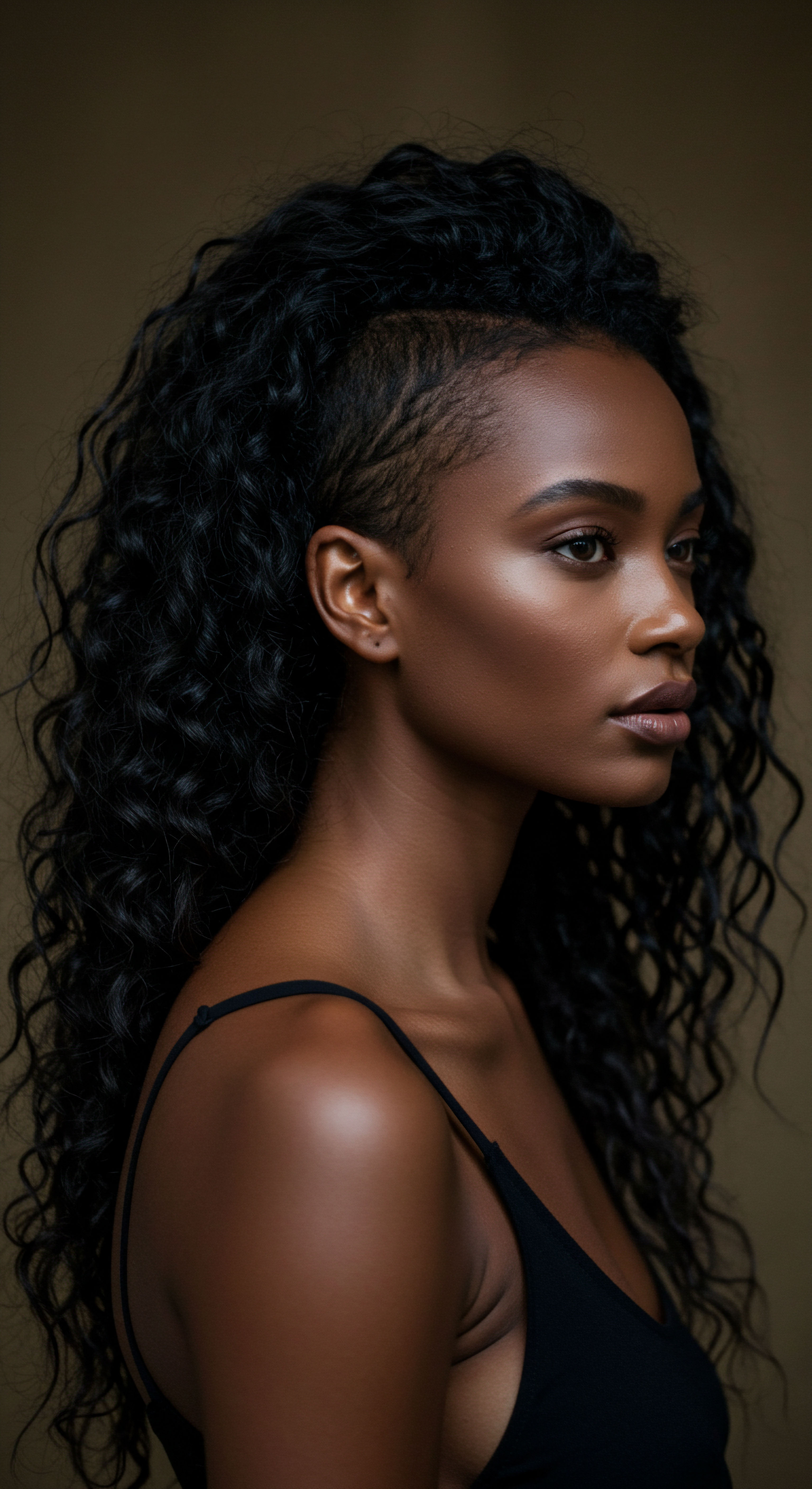
Building Personalized Textured Hair Regimens
A personalized regimen is a cornerstone for scalp health and hair growth. Textured hair often requires specific attention due to its unique structure, which can be prone to dryness and breakage. The journey to a thriving scalp begins with understanding its individual requirements.
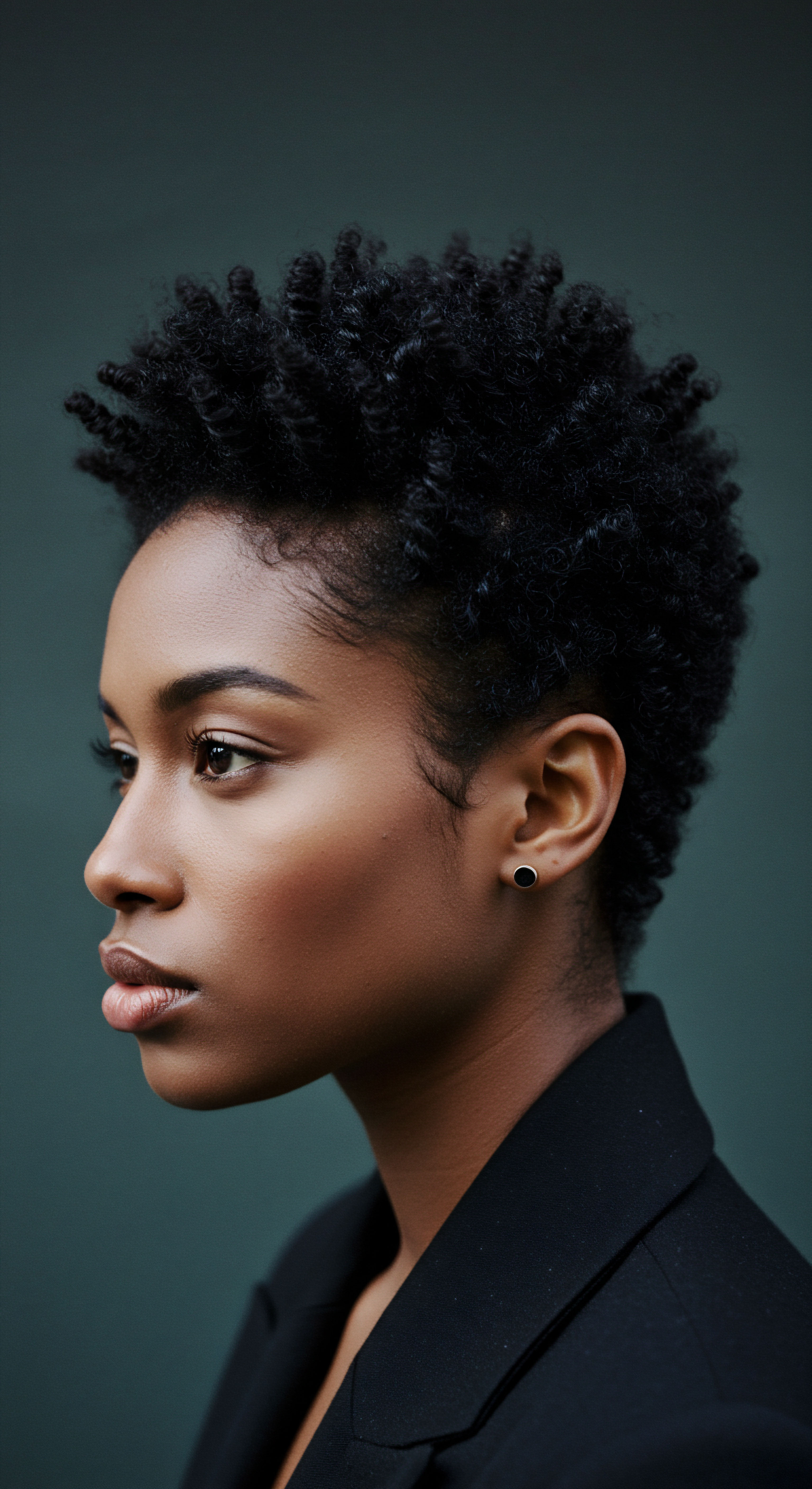
Gentle Cleansing and Moisture Balance
Regular, yet gentle, cleansing is paramount for scalp health. While a common misconception suggests less frequent washing prevents dryness, this can lead to product buildup, hindering the scalp’s natural processes. The aim is to cleanse without stripping the scalp of its essential oils.
- Sulfate-Free Shampoos ❉ These formulations clean effectively without harsh detergents that can disrupt the scalp’s natural balance and lead to dryness.
- Co-Washing ❉ For some, alternating between shampoo and conditioner-only washes can help maintain moisture while still cleansing.
- Scalp Exfoliation ❉ Gentle physical or chemical exfoliants can remove dead skin cells and product buildup, allowing follicles to breathe and absorb nutrients more readily. Ingredients like lactic acid or glycolic acid can be beneficial.
Following cleansing, moisture infusion is vital. Textured hair’s unique structure can make it challenging for natural sebum to travel down the hair shaft, often resulting in drier lengths and ends.
Consider a layering approach to hydration:
- Leave-In Conditioners ❉ Applied to damp hair, these provide a base layer of moisture.
- Hair Oils ❉ Lightweight oils, similar in composition to the scalp’s natural sebum, like jojoba oil, can seal in moisture without weighing hair down. Jamaican black castor oil is also widely recognized for its ability to stimulate growth and nourish the scalp when massaged into the roots.
- Scalp Serums ❉ These are formulated with active ingredients such as plant extracts, vitamins, peptides, and antioxidants. They support the scalp ecosystem by calming the microbiome, balancing pH, and stimulating blood flow to follicles, promoting hair growth.

The Nighttime Sanctuary ❉ Essential Sleep Protection
The hours of sleep, often overlooked, represent a profound opportunity for hair preservation and scalp restoration. Protecting textured hair at night minimizes friction, retains moisture, and guards against mechanical stress that can impede growth.

Bonnets and Silk Wisdom
The choice of sleep accessory holds significant weight. Cotton pillowcases, with their absorbent nature, can draw moisture from hair, leading to dryness and breakage. Their rough fibers also create friction, which can damage the delicate hair cuticle.
This is where the wisdom of silk and satin emerges.
- Silk or Satin Bonnets ❉ These smooth materials reduce friction, allowing hair to glide freely, thus minimizing tangles, breakage, and frizz. They also help retain the hair’s natural moisture, creating a protective micro-environment.
- Silk or Satin Pillowcases ❉ For those who prefer not to wear a bonnet, a silk or satin pillowcase offers similar benefits, providing a gentle surface for hair to rest upon.
These protective measures are not merely about preserving a hairstyle; they are integral to a holistic approach to hair health, supporting the scalp’s natural processes by reducing external stressors during its resting period.
Thoughtful nighttime hair protection, such as silk bonnets, safeguards textured strands from friction and moisture loss, contributing to scalp health.

Ingredient Deep Dives for Textured Hair Needs
The efficacy of scalp practices is deeply intertwined with the ingredients chosen. For textured hair, certain components offer exceptional benefits, supporting a healthy scalp environment conducive to growth.

Nourishing Botanicals and Their Contributions
Many natural ingredients are celebrated for their ability to moisturize, strengthen, and soothe the scalp.
| Ingredient Aloe Vera |
| Primary Benefit for Scalp Soothing, anti-inflammatory, reduces dandruff |
| Contribution to Hair Growth Promotes a healthy environment for follicle function |
| Ingredient Shea Butter |
| Primary Benefit for Scalp Intense moisture, scalp barrier support |
| Contribution to Hair Growth Prevents dryness and breakage that can hinder growth |
| Ingredient Coconut Oil |
| Primary Benefit for Scalp Deeply moisturizes, strengthens hair shaft |
| Contribution to Hair Growth Supports healthy hair from the root, reduces protein loss |
| Ingredient Rosemary Essential Oil |
| Primary Benefit for Scalp Stimulates circulation, anti-inflammatory |
| Contribution to Hair Growth May encourage blood flow to follicles, supporting growth |
| Ingredient Peppermint Essential Oil |
| Primary Benefit for Scalp Invigorating, increases circulation |
| Contribution to Hair Growth Stimulates follicles, can promote a healthy growth environment |
| Ingredient These ingredients work in concert to support a vibrant scalp and healthy hair. |
Beyond these, vitamins and minerals are indispensable. Vitamin E supports scalp health and elasticity, preventing breakage. Biotin aids in keratin production, the fundamental protein of hair. Minerals like Zinc and Iron are essential for proper hair follicle function and overall hair quality.

Textured Hair Problem Solving
Even with diligent care, challenges can arise. Addressing common textured hair concerns with informed practices is key to maintaining a growth-friendly scalp.
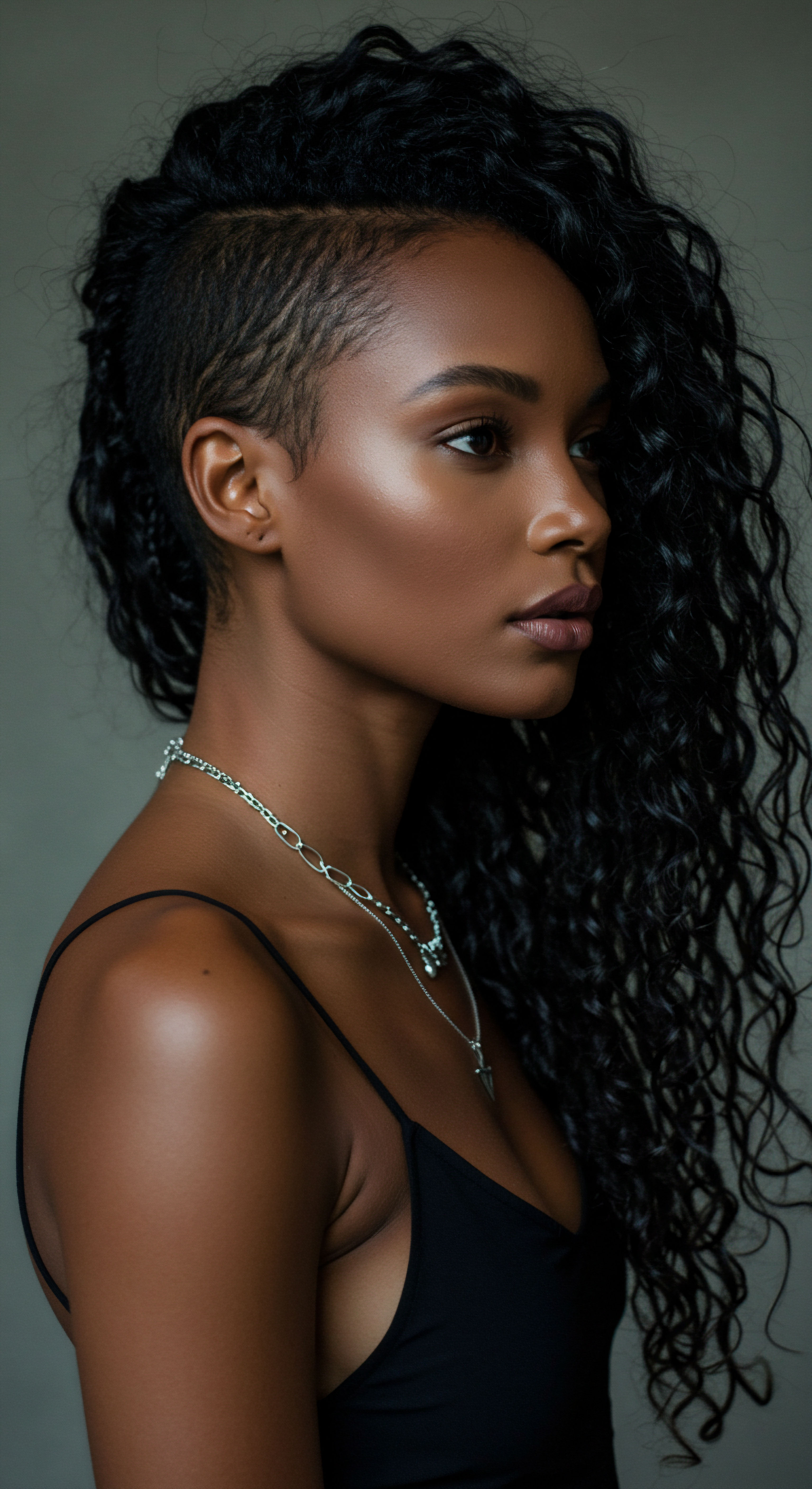
Managing Dryness and Product Buildup
Dryness is a frequent concern for textured hair due to its coiled structure and the path sebum takes. This can lead to an itchy, flaky scalp. Conversely, the desire to moisturize can sometimes result in product buildup, which can clog pores and hinder scalp respiration.
Solutions often involve a balance:
- Clarifying Shampoos ❉ Used periodically, these can remove heavy product buildup without excessive stripping, especially when followed by deep conditioning.
- Scalp Massages ❉ Gentle massage can help distribute natural oils, stimulate blood flow, and loosen buildup.
- Water-Based Products ❉ Prioritizing products with water as the first ingredient ensures true hydration rather than just sealing.
By understanding the unique properties of textured hair and the vital role of the scalp, we can cultivate practices that truly support its ability to thrive and grow.
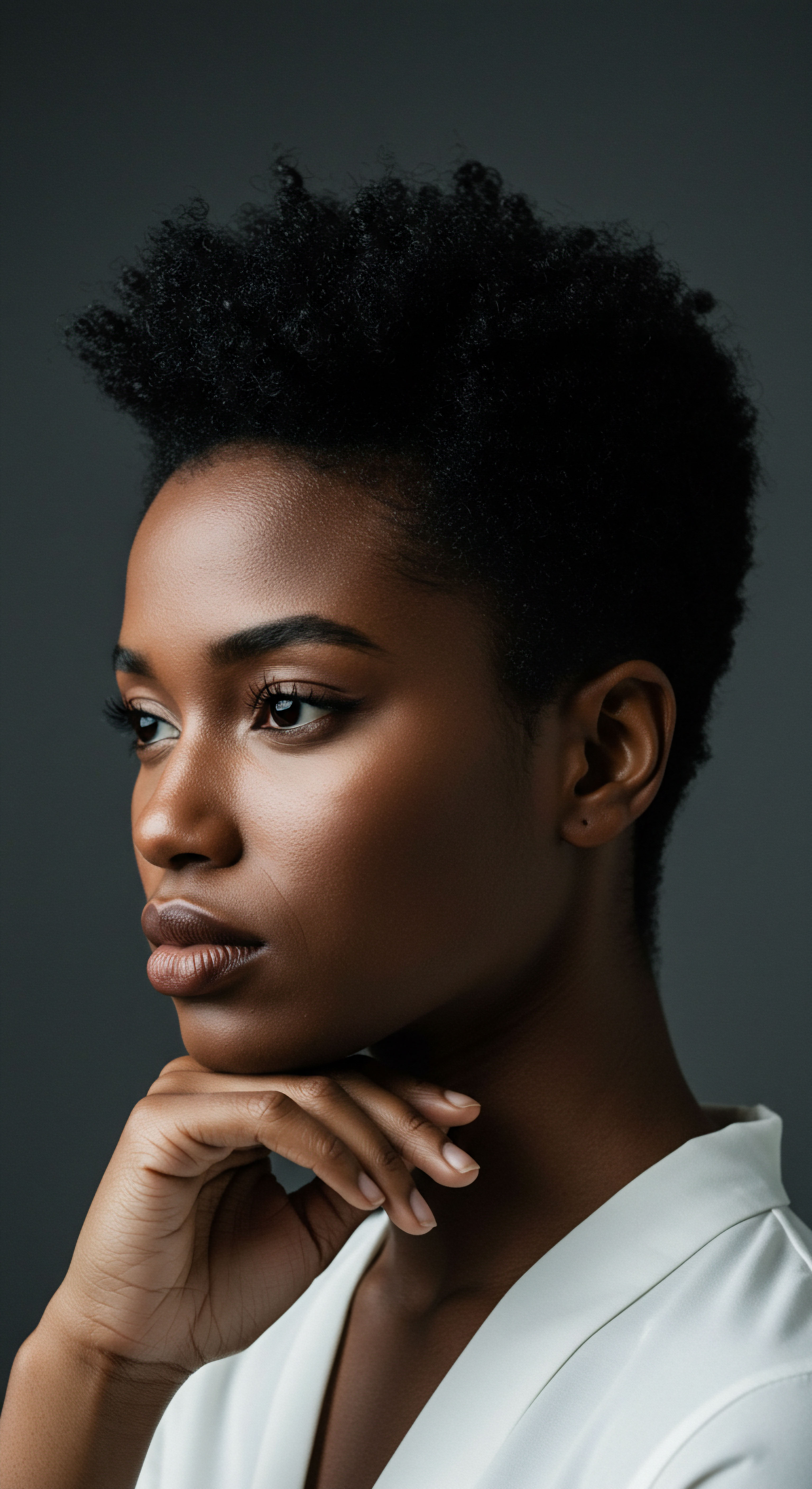
Relay
Our exploration now deepens, moving beyond the personal regimen to the intricate interplay of science, culture, and societal influence upon Black hair growth. The question of whether specific scalp practices enhance hair growth in Black hair unearths complexities that demand a nuanced lens, one that acknowledges both biological realities and the profound historical and cultural contexts that shape our hair journeys. Here, we delve into the less apparent mechanisms, drawing upon research and lived experience to illuminate the path forward.

The Interconnectedness of Scalp Health and Hair Longevity
The scalp is not merely a surface; it is a dynamic ecosystem, the very foundation upon which hair health rests. Its condition directly impacts the longevity of each hair strand and the potential for sustained growth.
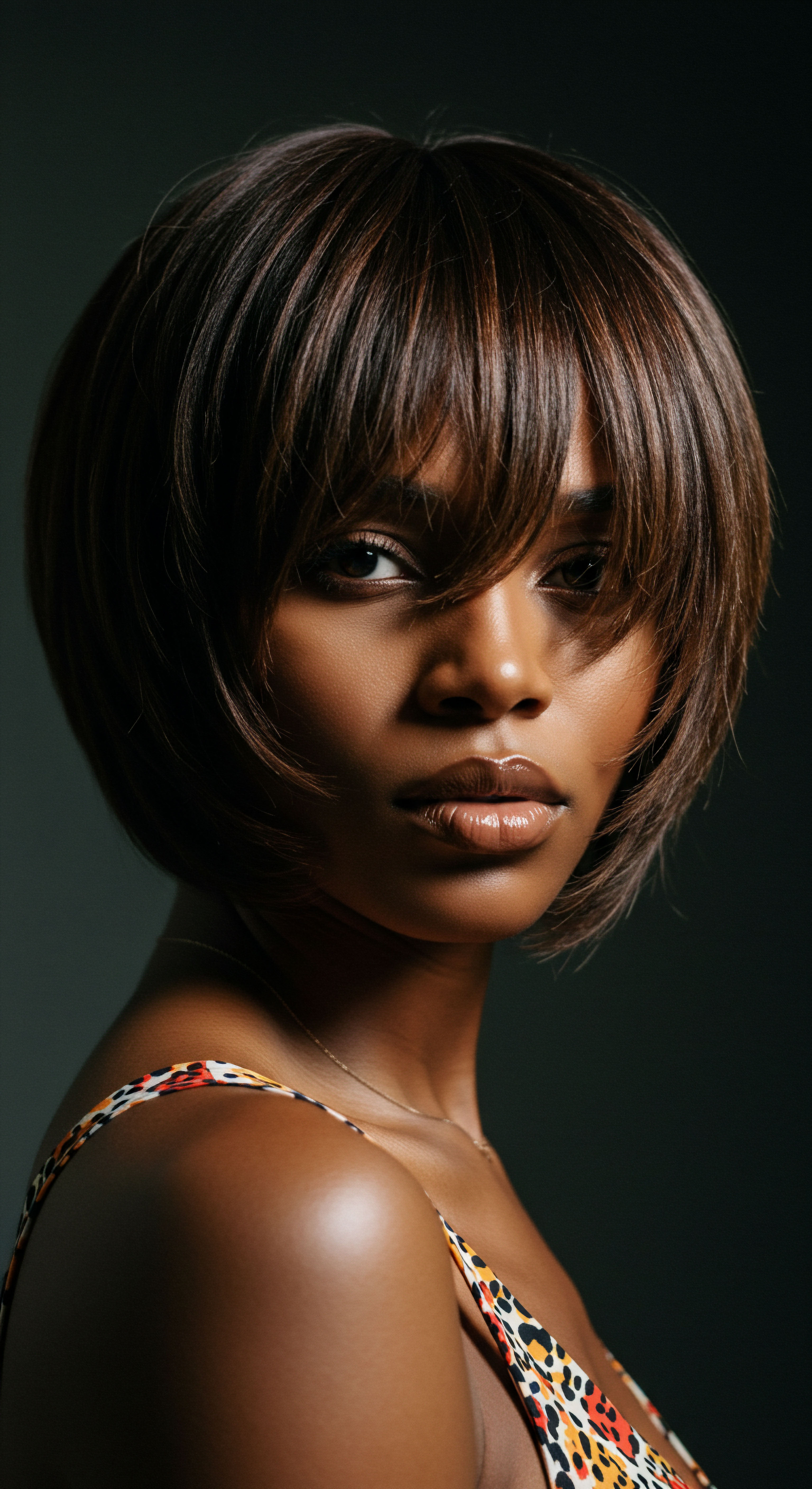
Inflammation and Scarring Alopecia
A significant challenge disproportionately affecting Black women is the prevalence of certain types of scarring alopecia, conditions where hair follicles are destroyed and replaced by scar tissue, leading to permanent hair loss. Central Centrifugal Cicatricial Alopecia (CCCA) is a prominent example, often starting at the crown and spreading outward. While its exact cause remains multifaceted and not fully understood, research suggests a combination of genetic predisposition (with a link to mutations in the PADI3 gene in some cases) and certain hair care practices may contribute.
For decades, the use of hot combs, chemical relaxers, and tight hairstyles have been implicated in CCCA, though studies have not always shown a consistent, direct causal link for every individual. However, these practices can certainly exacerbate inflammation around the hair follicles, which is a key precursor to scarring. For instance, the term “hot comb alopecia” was historically used to describe a scarring alopecia variant associated with hot metal combs and hot Vaseline, believed to cause chronic inflammation.
Another common concern is Traction Alopecia (TA), a non-scarring form of hair loss in its early stages, caused by prolonged tension or pulling on the hair follicles. This condition is particularly prevalent among women of African descent due to cultural hairstyling practices that involve tight braiding, weaves, and extensions. A study reported that TA affects one-third of women of African descent, and its prevalence can be as high as 37% in some populations.
The risk is notably increased when traction is applied to chemically processed hair, with one study indicating an odds ratio of 3.47 for TA when traction is added to relaxed hair compared to natural hair. This statistic highlights a critical intersection of styling choices and hair vulnerability, suggesting that while specific practices may not directly cause conditions like CCCA, they can certainly create an environment ripe for inflammation and subsequent damage.
Scarring alopecias, like Central Centrifugal Cicatricial Alopecia, can permanently halt hair growth by replacing follicles with scar tissue, often linked to chronic inflammation and certain hair practices.

Cultural Echoes and Modern Practices
The conversation around Black hair care is incomplete without acknowledging its deep cultural roots and the historical influences that continue to shape modern practices. From pre-colonial Africa, where hairstyles communicated status and identity, to the challenging realities of slavery and the subsequent pursuit of Eurocentric beauty standards, hair has always carried profound meaning.
The ritual of hair care, passed down through generations, often serves as a time for bonding and sharing stories. However, historical practices, such as the use of lye-based relaxers or heated tools, while serving a societal purpose at the time, sometimes inadvertently contributed to scalp distress and hair damage. The quest for straight hair, driven by oppressive beauty ideals, often meant sacrificing scalp integrity.
Today, a movement toward embracing natural textures is reshaping practices, prioritizing scalp health and gentle care. This shift acknowledges that healthy hair growth is not merely a biological phenomenon but a holistic one, deeply connected to self-acceptance and cultural pride.

Beyond the Surface ❉ The Science of Scalp Stimulation
Beyond avoiding harm, certain scalp practices are believed to actively stimulate the scalp, potentially promoting an environment conducive to hair growth.
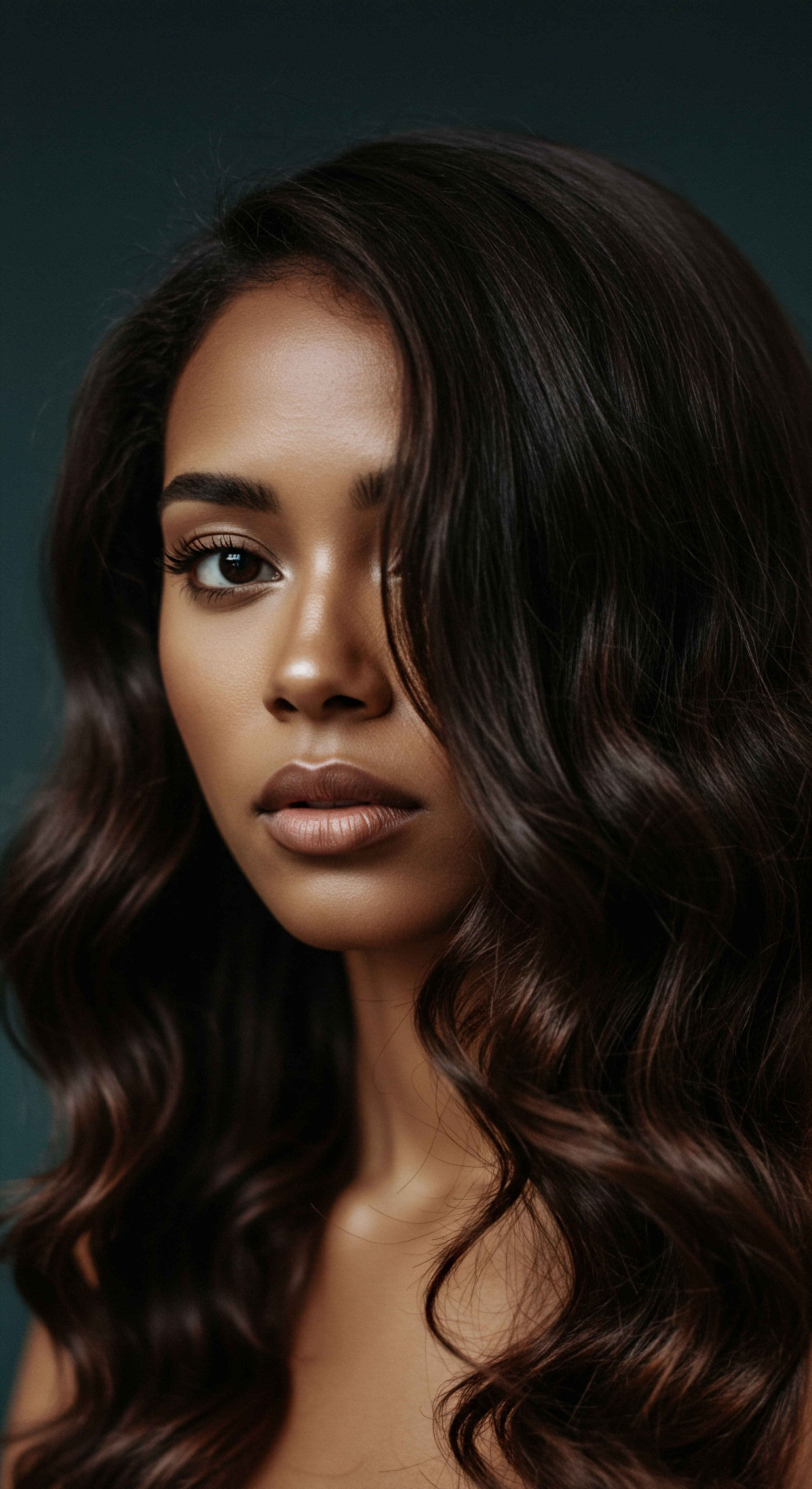
Scalp Massage and Blood Flow
The act of scalp massage is widely lauded for its potential benefits. Gentle manipulation of the scalp can increase blood circulation to the hair follicles. Enhanced blood flow means a more robust delivery of oxygen, nutrients, and growth factors to the dermal papilla, the very engine of hair production. While direct, large-scale studies specifically on scalp massage and Black hair growth are still developing, the physiological principles hold true across hair types ❉ a well-nourished follicle is better positioned for healthy growth.
This mechanical stimulation may also help to reduce tension in the scalp and distribute natural oils more evenly, preventing buildup and dryness. When coupled with the application of beneficial serums containing ingredients like peppermint or rosemary essential oils, which are known to stimulate circulation, the effects may be synergistic.

The Microbiome and Inflammation Management
As discussed, the scalp microbiome plays a vital role in scalp health. An unbalanced microbiome can lead to inflammation, which is a significant impediment to hair growth. Chronic inflammation around the hair follicles can force them into a resting phase prematurely, leading to thinning and shedding.
Specific practices that support a balanced microbiome include:
- Using PH-Balanced Products ❉ Textured hair often benefits from products formulated with a slightly acidic pH, which helps to keep the cuticle closed and the scalp balanced.
- Avoiding Harsh Chemicals ❉ Certain chemicals can disrupt the delicate microbial balance, leading to irritation and inflammation.
- Considering Prebiotics and Postbiotics ❉ Some hair care products are beginning to incorporate these ingredients to directly support the beneficial microorganisms on the scalp.
The scientific understanding of the scalp microbiome is still advancing, but its clear connection to inflammatory conditions and overall scalp vitality underscores its importance in the broader context of hair growth. Maintaining this intricate ecosystem is a proactive step toward creating an optimal environment for hair to thrive.

The Nutritional Underpinnings of Scalp and Hair Wellness
What we place into our bodies profoundly influences the health of our scalp and the vitality of our hair. Hair, being the second fastest growing cell in the human body, requires a consistent supply of nutrients. However, since hair is not a vital organ, the body prioritizes essential functions first. This means any nutritional imbalance will often manifest in hair and scalp issues before other symptoms appear.

Dietary Support for Follicle Function
A balanced diet rich in proteins, carbohydrates, iron, vitamins, and minerals is crucial for optimum hair health and growth.
Key nutritional considerations for scalp and hair:
| Nutrient Protein |
| Role in Hair Health Hair is primarily protein (keratin); essential for structural integrity. |
| Sources Lean meats, eggs, legumes, nuts. |
| Nutrient Iron |
| Role in Hair Health Supports oxygen transport to follicles; deficiency can lead to hair loss. |
| Sources Spinach, lentils, red meat. |
| Nutrient Zinc |
| Role in Hair Health Aids in cell reproduction and tissue growth; deficiency linked to hair shedding. |
| Sources Pumpkin seeds, chickpeas, nuts. |
| Nutrient Biotin (Vitamin B7) |
| Role in Hair Health Supports keratin infrastructure. |
| Sources Eggs, almonds, sweet potatoes. |
| Nutrient Vitamin D |
| Role in Hair Health Plays a role in hair follicle cycling. |
| Sources Fatty fish, fortified foods, sunlight. |
| Nutrient Omega-3 Fatty Acids |
| Role in Hair Health Anti-inflammatory, supports scalp health. |
| Sources Salmon, flaxseeds, walnuts. |
| Nutrient A diverse, nutrient-dense diet provides the building blocks for healthy hair growth. |
Staying adequately hydrated is also simple, yet powerful. Water contributes to a healthy, hydrated scalp, mirroring its effects on skin complexion.
The question of whether specific scalp practices enhance hair growth in Black hair is complex, intertwined with genetic predispositions, historical care practices, and individual responses. While there is no single magical solution, a holistic approach that prioritizes gentle care, understands the unique biological characteristics of textured hair, respects cultural heritage, and addresses potential inflammatory pathways through informed practices and nutrition, offers the most promising avenue for fostering a thriving scalp and encouraging healthy hair growth. The journey is personal, yet rooted in shared wisdom and scientific understanding.

Reflection
As our exploration concludes, a sense of quiet affirmation settles. The journey through the landscape of textured hair and scalp health reveals not a series of isolated actions, but a profound continuum of care, heritage, and science. The question of whether specific scalp practices enhance hair growth in Black hair finds its answer not in a singular definitive pronouncement, but in the gentle unfolding of interconnected truths. It is a story of roots nurtured, rituals honored, and the wisdom of generations meeting the clarity of modern understanding.
Each mindful touch, each carefully chosen ingredient, each moment of protection contributes to a larger symphony of well-being for our crowns. Our hair, truly a living extension of ourselves, responds to this symphony, inviting us to continue this dialogue of care with patience, knowledge, and an abiding respect for its inherent beauty.

References
- 1. Dantas, M. B. et al. “Black women’s hair ❉ the main scalp dermatoses and aesthetic practices in women of African ethnicity.” Anais Brasileiros de Dermatologia, vol. 91, no. 5, 2016, pp. 637-643.
- 2. Khumalo, N. P. et al. “Determinants of marginal traction alopecia in African girls and women.” Journal of the American Academy of Dermatology, vol. 59, no. 3, 2008, pp. 432-438.
- 3. Okereke, U. “What Every Dermatologist Must Know About the History of Black Hair.” Journal of the American Academy of Dermatology, 2023.
- 4. Sperling, L. C. & Sau, P. “The hot comb alopecia syndrome ❉ a retrospective study of 10 cases.” Journal of the American Academy of Dermatology, vol. 27, no. 5 Pt 1, 1992, pp. 687-692.
- 5. Miteva, M. & Tosti, A. “Central centrifugal cicatricial alopecia.” Journal of the American Academy of Dermatology, vol. 68, no. 6, 2013, pp. 1000-1006.
- 6. Callender, V. D. et al. “Hair care practices and their effects on hair and scalp disorders in women of African descent.” Journal of Clinical and Aesthetic Dermatology, vol. 6, no. 8, 2013, pp. 10-16.
- 7. Aguh, C. & McMichael, A. Hair Loss in Women of Color ❉ Medical and Surgical Management. Springer, 2016.
- 8. Yang, H. et al. “Efficacy of scalp massage on hair growth and hair thickness ❉ a systematic review and meta-analysis.” Journal of Cosmetic Dermatology, vol. 20, no. 1, 2021, pp. 242-250.
- 9. Davis-Sivasothy, A. The Science of Black Hair ❉ A Comprehensive Guide to Textured Hair Care. Sivasothy, 2011.
- 10. Porter, C. Hair Loss and the World of Trichology ❉ Why You Should Care if You Want to Save Your Hair. Mane Insights, 2016.